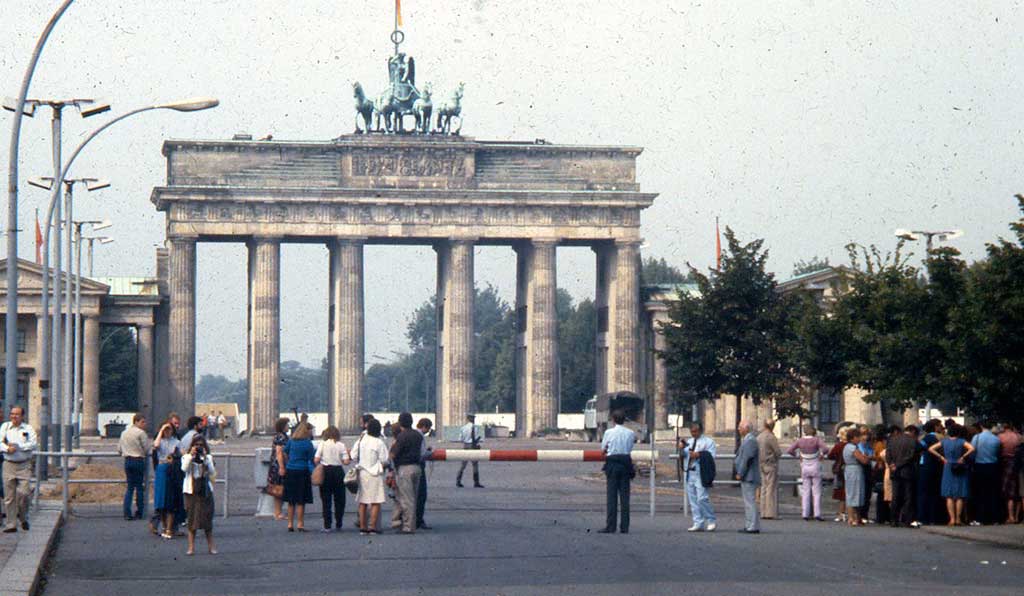1945-1991
A period of bipolar world order that saw Communist Russia with its satellite states and the USA with other capitalist Western states locked in a silent conflict. The threat of nuclear war was in the air.

People observing the Brandenburg Gate from the East Berlin side, 31 July 1984. Photo by George Garrigues
Background
The “Iron Curtain” had fallen between the communist world and the capitalist world. It was characterized by an arms race, the threat of nuclear war and a fight over dominion in third world countries.
Cold War
In 1947, the USA launched the Marshall Plan to recover Europe. Russia forced the satellites states of Eastern Europe to say no.
In April 1948, Stalin launched the Berlin Blockade. Berlin had been divided into sectors between the Allies and in 1948 Stalin closed the western sector of Berlin off from any outside connections. However, that attempt had little effect.
In 1949 NATO was formed and the Soviet Union tested its own atomic bomb. On 1 October 1949 the People’s Republic of China was declared by Mao Zedong. That was the biggest victory for the communist side to date.
In 1950-53 the Korean War shook Asia. Both sides participated but had little success. The region has remained divided to this day.
Stalin’s final years
The period from 1945-53 was the time of one of the greatest repressions. Stalin had become extremely paranoid. People were sent to concentration camps in unprecedented numbers and his cult of personality was at its peak.
Cold War
1945-1991
A period of bipolar world order that saw Communist Russia with its satellite states and the USA with other capitalist Western states locked in a silent conflict. The threat of nuclear war was in the air.
People observing the Brandenburg Gate from the East Berlin side, 31 July 1984. Photo by George Garrigues
Background
The “Iron Curtain” had fallen between the communist world and the capitalist world. It was characterized by an arms race, the threat of nuclear war and a fight over dominion in third world countries.
Cold War
In 1947, the USA launched the Marshall Plan to recover Europe. Russia forced the satellites states of Eastern Europe to say no.
In April 1948, Stalin launched the Berlin Blockade. Berlin had been divided into sectors between the Allies and in 1948 Stalin closed the western sector of Berlin off from any outside connections. However, that attempt had little effect.
In 1949 NATO was formed and the Soviet Union tested its own atomic bomb. On 1 October 1949 the People’s Republic of China was declared by Mao Zedong. That was the biggest victory for the communist side to date.
In 1950-53 the Korean War shook Asia. Both sides participated but had little success. The region has remained divided to this day.
Stalin’s final years
The period from 1945-53 was the time of one of the greatest repressions. Stalin had become extremely paranoid. People were sent to concentration camps in unprecedented numbers and his cult of personality was at its peak.
Berlin Blockade